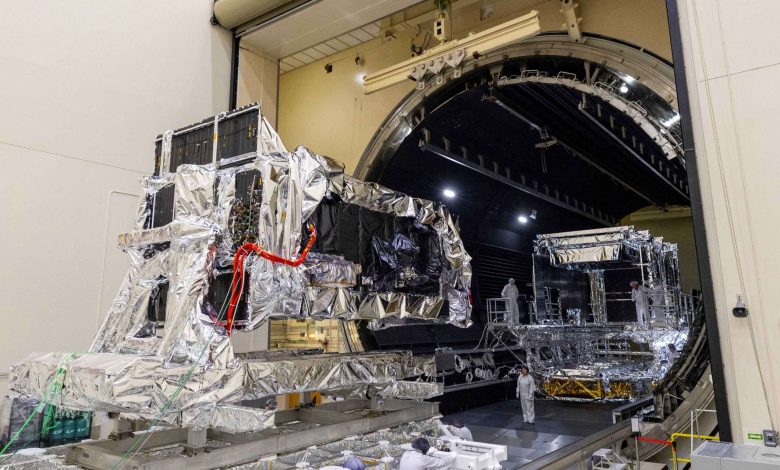
Groundbreaking GEO Missile Warning Satellite Passes Key Environmental Tests, Ready for Space Force Deployment
The initial unit of a groundbreaking, enhanced, and more resilient missile detection satellite, crafted by Lockheed Martin (NYSE: LMT) for today’s fiercely competitive space arena, has triumphantly finished its environmental evaluations.
The inaugural Next-Generation Overhead Persistent Infrared (Next-Gen OPIR) Geosynchronous Earth Orbit (GEO) Block 0 missile detection satellite has recently finalized thermal vacuum (TVAC) and acoustic assessments. The successful completion of these tests, conducted at Lockheed Martin Space’s facility in Sunnyvale, California, ensures the satellite remains on course for delivery.
During the TVAC evaluations, the Next-Gen OPIR GEO satellite endured an arduous, simulated extraterrestrial environment, demonstrating its capability to function and endure extreme temperatures and pressures during an extended tenure in GEO. The acoustic assessments revealed the satellite’s resilience against the intense vibrations it will encounter during launch.
With environmental evaluations concluded, the satellite has entered the final systems integration testing phase, which involves assessing connections with various terrestrial systems.
“Next-Gen OPIR GEO will significantly bolster America’s continuous, global monitoring and detection capabilities for missile threats,” stated Joe Rickers, vice president of Transport, Tracking & Warning Programs at Lockheed Martin. “With the first Next-Gen OPIR GEO poised for launch in the near future, Lockheed Martin is prepared to assist the government’s mission to safeguard America.”
Significance: Escalating Missile Challenges
From a GEO perspective – roughly 22,000 miles above the Earth’s surface – the advanced sensors of Next-Gen OPIR GEO will offer an unparalleled view of the Earth’s mid-latitudes to identify ballistic missiles, hypersonic threats, and other dangers to America and its allies.
The innovative sensors in Next-Gen OPIR GEO are engineered to recognize emerging adversary risks, including missile boost technologies that exhibit faster burning and reduced visibility. These satellites, based on Lockheed Martin’s reliable LM 2100™ combat bus, are equipped with robust features to counteract anti-space threats.
The pioneering Next-Gen OPIR GEO initiative will augment and ultimately replace the operational, Lockheed Martin-developed Space Based Infrared System (SBIRS). SBIRS is a combat-validated, space-based early-warning system that has shielded America’s forces and allies from ballistic missile strikes.
In 2024, SBIRS delivered prompt detection and early alerts for numerous missiles targeted at Israel, enabling the U.S. and its allies to monitor and neutralize those threats. In 2020, SBIRS defended U.S. personnel at Al-Asad Airbase in Iraq from a ballistic missile strike.
Bolstering A Layered Homeland Defense
“America’s optimal defense will always commence with receiving the earliest potential warning of threats – and such alerts will derive from what we observe in space,” expressed Jeff Schrader, vice president for Strategy and Business Development at Lockheed Martin. “Building on our established mission experience, Next-Gen OPIR GEO will deliver timely, essential missile warning information to bolster our nation’s multi-layered missile defense systems.”
The new Next-Gen OPIR GEO satellites will collaborate closely with SBIRS and forthcoming Next-Gen OPIR Polar satellites. These systems will mesh into a coherent, resilient, multi-tiered national missile warning, tracking, and defense framework.






